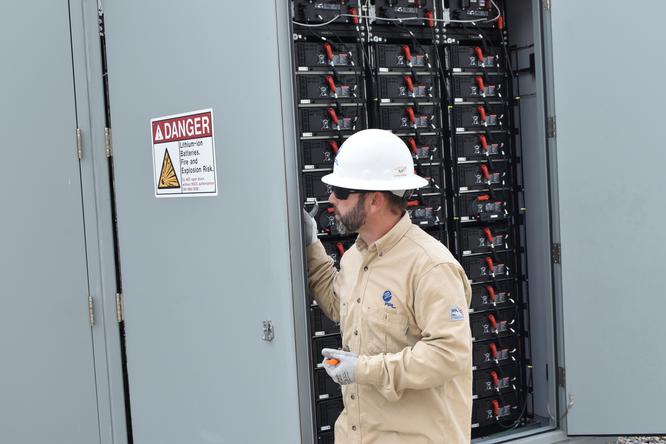As an engineer and site manager for Florida Power & Light, Kamil Kubal has seen a change in the landscape over the 15 years he has worked for the company — namely, the 751 acres of solar panels that stretch across fields beside the natural gas plant at Manatee County Solar Energy Center in Parrish.
Four FPL solar centers in Manatee County together comprise 1 million panels, a milestone for which the company was honored at a March 8 meeting of the Manatee County Commission.
Serving 11 million Floridians, FPL is the state’s primary power utility, and its other solar additions to Manatee County include Southfork Solar Energy Center (Parrish) in 2020, Willow Solar Energy Center (Myakka City) in 2021, and Elder Branch Solar Energy Center (Parrish) in 2022. The county is one of five in Florida to reach 1 million panels with FPL, coming in second place behind DeSoto County.
“We found that our coal plants were inefficient and more expensive to operate,” said FPL spokesperson Jack Eble. “So by replacing that with highly efficient natural gas and solar energy, we've been able to keep costs down for customers.”
The four centers combined, he said, are capable of generating 298 megawatts of energy, enough to power 60,000 homes and the equivalent of 56,000 fewer cars on the road in reduced carbon emissions. Eble said these installations have always been part of a larger goal of reaching 30 million solar panels by 2030.
However, despite recent movements toward solar energy, Eble said FPL's investigation of solar stretches back to the 1980s, while the first full solar site was built in DeSoto in 2009 and had only 25 megawatts in output, compared to the 74.5 offered by Manatee County Solar Energy Center.

“At the turn of the millennium, we started converting old, inefficient natural gas, oil and coal plants, for example, into ultra-efficient natural gas plants,” Eble said, noting that last year, FPL demolished its last coal plant in the state, the Indiantown Cogeneration Plant, which was located in Martin County.
At the Manatee Solar Energy Center in Parrish, solar panels stretch into the distance across 751 acres of land, coexisting with wildlife including deer, coyotes and wild boars.
Inverters convert the direct current produced by the solar panels to an alternating current that can be used by the power grid. The energy is then transferred to a substation, from which it is sent through another inverter and converted back to direct current for storage in the battery units. From there, it can be converted back to alternating current for distribution to the community.
“It goes to the grid and then wherever those electrons will take it,” said Kubal. “It goes to homes, businesses and all other places connected to the power grid.”
Kubal said the panels themselves are not the only technological advancements. There are also many recent improvements in how the panels are used and serviced. He said that larger inverters capable of handling more output are now becoming more common and that servicing panels is made simpler by the ability to fly over the site with a drone and take a thermal reading.
"It's using new technology," he said. “They can give me the drone map, I can get my iPad, and it's going to tell me exactly where I have to go."
However, Kubal said that as the company continues to evolve, his responsibilities are changing as well, and he's now site manager for a unique feature of the solar center which began serving the community in January — the world's largest solar-powered battery at the Manatee Energy Storage Center.
Eble said that the battery — a collection of small units that each weigh 270 pounds — is equivalent to 100 million iPhone batteries and is capable of supplying 409 megawatts, enough energy to power 329,000 homes for two hours. "One of the benefits of having that that battery system is that our customers can enjoy the benefits of solar energy at night, when the sun's not shining, or that during inclement weather, we're able to still deploy solar energy onto the grid,” he said.
He also noted that the company is looking into further methods of cleaner energy production. A pilot project in development at the Okeechobee Clean Energy Center involves a natural gas plant in which the electrolyzer, the tool that splits water into hydrogen and oxygen, will be powered by the Cavendish Solar Energy Center.




